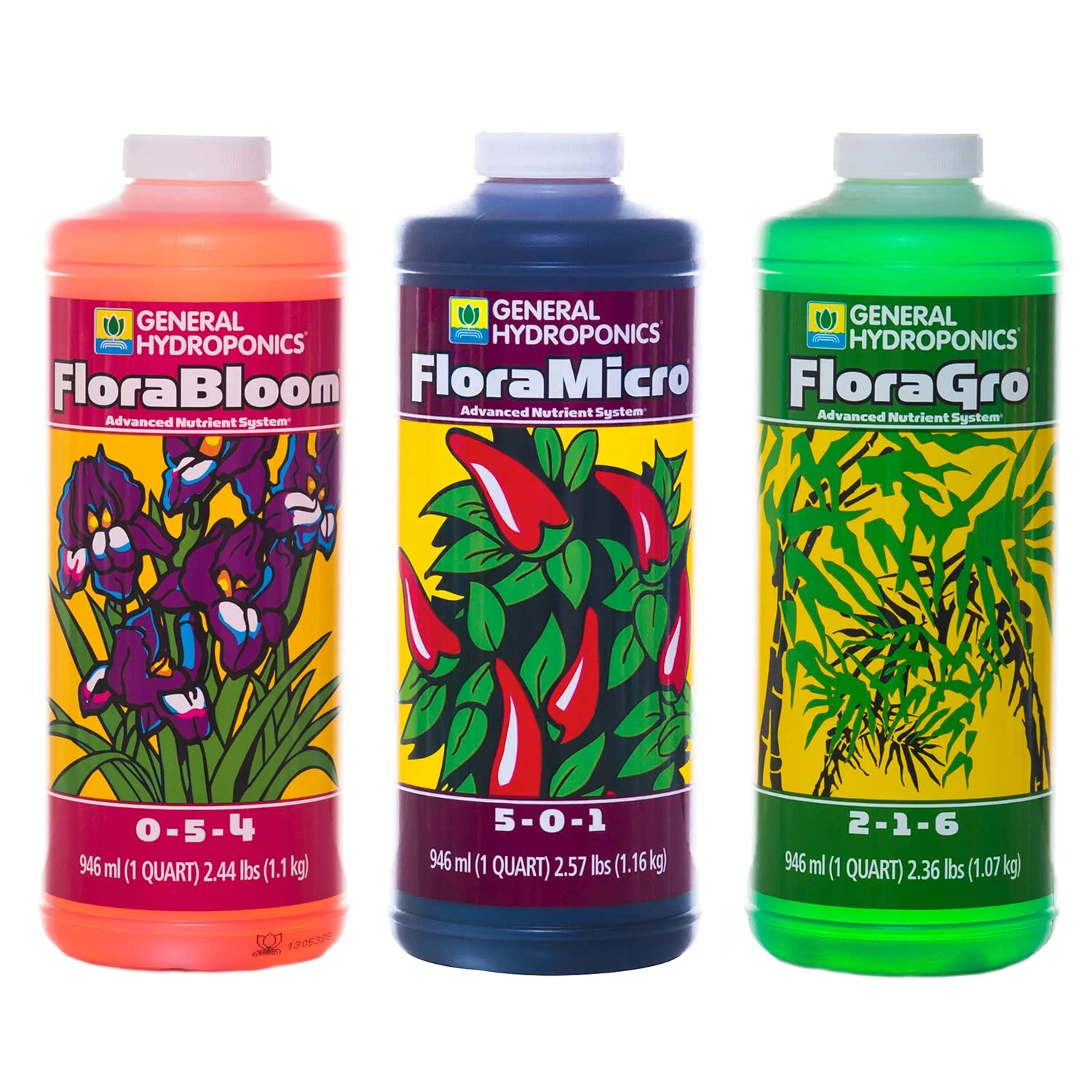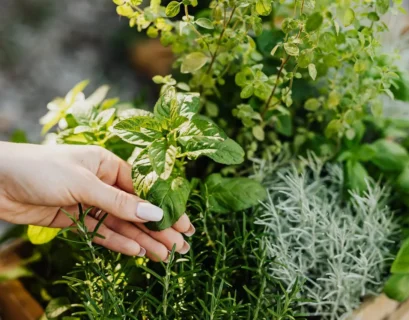Are you ready to unlock the secrets of hydroponic seed starting? If you’re looking for a revolutionary way to nurture your seeds, you’ve come to the right place! This guide will equip you with everything you need to know about how to start seeds for hydroponics, taking you from newbie to hydroponic seed hero.
Table of Contents:
Let’s embark on this exciting journey together!
1. Hydroponics for Seed Starting
Hydroponics is a game-changer when it comes to growing plants, and it’s especially useful for starting seeds. Ditch the soil and embrace a world of nutrient-rich water solutions! By using a nutrient-filled water solution instead of soil, you’ll give your seeds the optimal environment for germination and growth.
The beauty of hydroponic seed starting is that it allows for more control over the growth environment. You can precisely regulate the nutrient levels, pH, and temperature, creating a haven for your seedlings to thrive.
Think about it this way: it’s like giving your seeds a VIP pass to a five-star hotel. They’ll get pampered with luxurious nutrients, perfect lighting, and a comfy temperature, ensuring they sprout and develop with gusto.
But wait, there’s more! Hydroponics can also be a space-saving solution. You can cultivate a thriving garden without needing a vast outdoor plot. Imagine growing your favorite herbs, vegetables, or flowers indoors, year-round. Talk about a win-win!
Don’t worry if you’re a hydroponics newbie. We’ll cover everything you need to know, step by step.
In the next section, we’ll explore the essential equipment and supplies you’ll need to embark on your hydroponic seed starting adventure.
2. Essential Equipment and Supplies
Now that you’re ready to dive into the world of hydroponic seed starting, it’s time to gather your essential equipment and supplies.
AeroGarden Bounty Basic lets you grow herbs, veggies, or even flowers right on your counter, no dirt required! Special lights help them grow super fast, and it reminds you when to add water.
Plus, you can leave for vacation and it'll keep your plants happy. Great for anyone who wants fresh stuff at home, easy!
Features:
- Grows up to 9 plants
- 30W LED grow light provides full-spectrum light
- Automatic lighting timer
- High-resolution display for easy monitoring
- Adjustable grow height (up to 24 inches)
- Large water bowl for less frequent refilling
- Includes Gourmet Herbs Seed Pod Kit (8 varieties)
Don’t worry, you don’t need a ton of fancy gear to get started. Here’s a breakdown of what you’ll need:
- Hydroponic System: Choose a system that fits your space and needs. We’ll discuss different types in the next section.
- Growing Medium: Instead of soil, hydroponics uses inert growing media. Some popular options include rockwool cubes, coco coir, or clay pebbles.
- Nutrient Solution: This is where you’ll provide your seedlings with all the necessary nutrients for growth. You can purchase pre-mixed solutions or create your own custom blends. You can check out our guide on DIY hydroponic fertilizers.
- Seeds: Choose high-quality seeds from a reputable source.
- Water: Clean, filtered water is essential for hydroponic growing. Avoid using tap water that might contain chlorine or other harmful chemicals.
- pH Meter: This handy tool helps you measure the acidity or alkalinity of your nutrient solution. The ideal pH range for most plants is 5.5 to 6.5.
- EC Meter: This measures the electrical conductivity of your nutrient solution, which indicates the concentration of nutrients.
- Grow Lights: If you’re starting seeds indoors, you’ll need grow lights to provide the necessary light for germination and growth.
- Timer: A timer helps you maintain a consistent light schedule for your seedlings.
- Fan: Circulating air helps prevent fungal diseases and promotes healthy growth.
Getting Started with Your Equipment:
- Clean Your System: Before using any new equipment, sanitize it thoroughly with a bleach solution to prevent contamination.
- Prepare Your Growing Medium: Soak your growing medium, whether rockwool cubes, coco coir, or clay pebbles, in water for a few hours. This ensures it is properly hydrated and ready to support your seedlings.
- Mix Your Nutrient Solution: Follow the instructions on your nutrient solution package or recipe to create a solution that meets the needs of your seedlings.
- Adjust pH and EC: Use your pH and EC meters to adjust the nutrient solution to the optimal levels for your plants.
A Note About Seeds:
When starting seeds for hydroponics, you’ll need to consider a couple of things:
- Seed Germination: Different seeds have different germination rates. Some might take a few days, while others might take a week or more.
- Seedling Vigor: When starting seeds in hydroponics, it’s important to ensure the seeds you choose are strong and healthy. This will help ensure vigorous growth once they are transferred to your hydroponic system.
Starting Your Hydroponic Seed Journey
Are you ready to start growing your own food? You’re in the right place. Let’s explore how to start seeds for hydroponics in the next section. We’ll walk through the steps, offer tips, and guide you on your way to success.
3. Choosing the Right Hydroponic System
Now that you understand the basics of how to start seeds for hydroponics, it’s time to choose the right hydroponic system for your needs. There are a variety of systems available, each with its own advantages and disadvantages. Here are a few popular options:
- Deep Water Culture (DWC): This system is simple and affordable, making it a great choice for beginners. It involves growing plants in a container filled with nutrient solution. The roots are submerged in the solution, which is constantly aerated. The Ultimate Guide to Growing Hydroponic Strawberries Year-Round A DWC system is a good option for starting seeds because it provides ample space for roots to develop.
- Nutrient Film Technique (NFT): This system involves growing plants in a shallow channel, with a thin film of nutrient solution flowing over the roots. NFT systems are more efficient than DWC systems because they require less water and nutrients. General Hydroponics FloraSeries: The Best Guide to Growing in Thailand However, NFT systems can be more complex to set up and maintain.
- Ebb and Flow System: This system involves periodically flooding the growing medium with nutrient solution, then allowing it to drain. Ebb and flow systems are versatile and can be used for a variety of plants. Click & Grow Smart Garden 9 Review They are also relatively easy to set up and maintain.
- Aeroponics: This system involves growing plants in a mist of nutrient solution. Aeroponics is the most advanced hydroponic system, but it is also the most expensive. Hydroponic Lighting Schedule: How Many Hours is Optimal for Growth? It offers the fastest growth rates and requires less water than other systems.
When choosing a system, consider factors such as your budget, the space you have available, and the types of plants you want to grow. You can also consult with experienced hydroponic growers to get their advice on which system is right for you.
No matter which system you choose, remember to follow the instructions carefully and use clean water and nutrient solution to prevent the growth of harmful bacteria. With a little care and attention, you’ll be able to successfully grow your own plants using hydroponics.
4. Step-by-Step Guide to Hydroponic Seed Starting
Now that you have your equipment and system ready, it’s time to dive into the exciting process of starting seeds hydroponically. This method offers a great deal of control over your seedlings’ environment, giving them the best chance to thrive. Here’s a step-by-step guide to get you started:
1. Seed Selection and Preparation:
- Choose the Right Seeds: Select high-quality seeds from a reputable source. Consider your desired crops and ensure they are suitable for hydroponic growing.
- Soaking: Soak your seeds in warm water for a few hours before planting. This helps to soften the seed coat and accelerate germination.
- Germination: Use a germination medium like rockwool cubes or Jiffy pellets. Place the seeds in the moistened medium, ensuring they are properly positioned for optimal growth.
- The Flora Series is a hydroponic-based nutrient system that helps fulfill your plants’ nutrient needs at every stage of growth
2. Setting Up the Hydroponic System:
- Prepare the Nutrient Solution: Follow the instructions for your chosen nutrient solution. Be sure to calibrate your pH and EC levels for ideal plant growth.
- Fill the Reservoir: Add the nutrient solution to the reservoir of your hydroponic system, ensuring adequate water levels.
- Position the Seedlings: Carefully place the seedlings in their respective locations within the system, making sure their roots are submerged in the nutrient solution.
3. Providing Light and Environmental Control:
- Lighting: Provide adequate light for your seedlings. This may involve using fluorescent lights, LED grow lights, or even natural sunlight. Refer to the light requirements of your chosen plants for specific durations and intensities.
- Temperature: Maintain an optimal temperature for your chosen plants, typically between 70-80 degrees Fahrenheit (21-27 degrees Celsius).
- Humidity: Ensure sufficient humidity to help the seedlings maintain moisture and prevent wilting.
4. Monitoring and Maintenance:
- pH and EC Levels: Regularly check the pH and EC levels of your nutrient solution and adjust as needed. You can learn more about these essential aspects in our comprehensive guide on Athena Nutrients for Hydroponics.
- Watering: Hydroponic systems don’t require traditional watering, but you will need to monitor the water levels in your reservoir.
- Air Circulation: Maintain good air circulation to prevent disease and ensure proper airflow to the plant roots.
- Observation: Observe your seedlings for any signs of stress or disease. Address any issues promptly to ensure healthy growth.
5. Transplanting:
- Time to Transplant: Once your seedlings have developed several true leaves and a robust root system, they’re ready to be transplanted to a larger hydroponic system or even into soil.
This step-by-step guide offers a solid foundation for successful hydroponic seed starting. Remember, with patience and meticulous care, you’ll soon be enjoying the rewards of homegrown plants! If you’re interested in learning more about different hydroponic systems, be sure to check out our guide on “What are the best hydroponic systems for growing flowers?”. You can also find a detailed step-by-step guide on “How to grow hydroponic strawberries” if you’re interested in cultivating delicious, juicy strawberries. Happy growing!
5. Tips and Tricks for Success
Now that you have a good grasp of the basics, let’s delve into some valuable tips and tricks to ensure successful hydroponic seed starting:
- Choosing the Right Seeds: Opt for high-quality seeds specifically designed for hydroponic growing. These seeds often germinate faster and produce healthier plants. Click & Grow Smart Garden 9 Review provides a comprehensive guide on selecting suitable seeds for your chosen system.
- Maintaining Optimal Water Temperature: Warm water encourages faster germination. A water temperature between 70-75 degrees Fahrenheit is ideal. You can utilize a heating mat or place your seed trays in a warm location to achieve the desired temperature.
- Proper Lighting: Providing adequate light is crucial for successful seed starting. A grow light with a specific spectrum for germination is recommended. Adjust the lighting duration based on the plant’s needs, ensuring adequate sunlight for healthy growth.
- Nutrient Solution: A balanced nutrient solution tailored for seedlings is essential. Using a nutrient solution specifically designed for hydroponics will provide the necessary nutrients for healthy plant development.
- Monitoring pH Levels: Maintaining the pH level of the nutrient solution within the optimal range is critical. Most plants thrive in a pH level between 5.5 and 6.5. Regularly monitoring the pH levels and adjusting them as needed is vital for optimal plant growth.
- Ventilation: Good air circulation is vital to prevent mold and disease. Ensure proper ventilation within your grow space.
- Patience: Seed germination can take time. Don’t get discouraged if you don’t see results immediately. Give your seeds time to sprout, and monitor them closely for any signs of growth.
Conclusion
Mastering the art of how to start seeds for hydroponics is an enriching journey that opens doors to a world of possibilities. With the right knowledge, equipment, and a touch of patience, you can create a vibrant and thriving hydroponic garden right in your own home. From growing delicious herbs and leafy greens to experimenting with exotic fruits and vegetables, the possibilities are endless.
Embrace the benefits of hydroponics, enjoy the rewarding experience of growing your own food, and witness the magic unfold as you watch your seedlings transform into healthy, flourishing plants.













